If the title suggests to you that we went around with our Kodak or Agfa cameras (the prevalent models in the 1970s) to take pictures of our favourite film-stars like Dilip Kumar, Dev Anand, Vyjayanthimala or Nutan, you are as far away from the mark as someone who thinks pineapple is an apple-like fruit that grows on the pine trees. Worse, if you think, we – the navy officers – had decided to get rid of the bad guys or the villains in the Indian movies from Jeevan to Pran to Amjad Khan in Sholay and carried guns for that specific purpose, once again, you are wrong.
Shooting Stars is simply the process of bringing down to the horizon the images with the help of a marine sextant (see picture) of some of the 57 navigational stars given in the nautical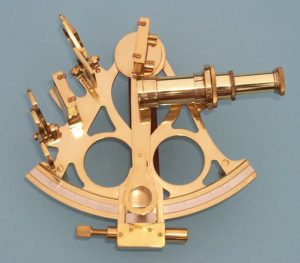 almanac at the times of morning and evening nautical twilights (when both the stars and the horizon can be seen by the naked eye), thus measuring their exact angle with the earth’s horizon in degrees, arcminutes and arcseconds. The idea was to fix the position of a ship at sea, far from shore objects, in comparison to the known position of some of these 57 navigational stars. Naturally, in order to fix the position of the ship with some accuracy, one would have to get
almanac at the times of morning and evening nautical twilights (when both the stars and the horizon can be seen by the naked eye), thus measuring their exact angle with the earth’s horizon in degrees, arcminutes and arcseconds. The idea was to fix the position of a ship at sea, far from shore objects, in comparison to the known position of some of these 57 navigational stars. Naturally, in order to fix the position of the ship with some accuracy, one would have to get 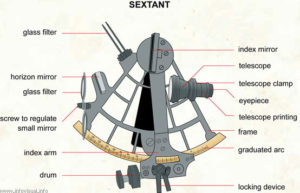 more than two bearing lines. The accuracy and the fastness of the observations would ensure that most of the bearing lines (from more than two stars) would meet at a point and that would be the fixed position of the ship. Without boring you with complex details, this in essence is the theory of the celestial navigation, also known as astronavigation. During our formative years in the navy, all of us had to learn the intricacies of the astronavigation.
more than two bearing lines. The accuracy and the fastness of the observations would ensure that most of the bearing lines (from more than two stars) would meet at a point and that would be the fixed position of the ship. Without boring you with complex details, this in essence is the theory of the celestial navigation, also known as astronavigation. During our formative years in the navy, all of us had to learn the intricacies of the astronavigation.
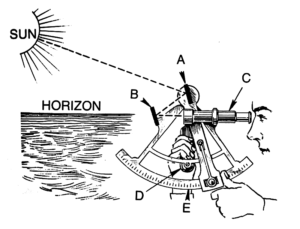
What about daytime? you will ask me. Well, one would shoot the sun! Aha, but sun is only one, you will persist. Yes, thank God, it is only one. However, if you measure the angle of the sun at different times of the day, allow for the changes in dead-reckoning (or DR) positions of the ship, you will get as many bearing lines as the number of times you shoot the sun, and then, once again, you can fix the ship. Fair enough, you will now ask, but, what exactly is a dead reckoning (DR) position. If you ain’t seeing the stars until now, a DR position is:
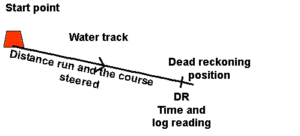
the process of calculating one’s current position by using a previously determined position, or fix, and advancing that position based upon known or estimated speeds over elapsed time and course. The corresponding term in biology, used to describe the processes by which animals update their estimates of position or heading, is path integration.
I remember the time, when I underwent my higher-command course with the army at Mhow, and we joked about army in the mountains advancing with the speed of the mules (they provide logistic support to the army and no army can reach a place or sustain itself unless and until the mules carrying the logistics have cought up). We used to have any number of cartoons about the pongos (naval slang for army infantry guys) and mules. Little did the army guys know that some of our own methods also originated from the animals!
If you are with me so far, with or without stars in your eyes, you would then ask me if we already have the DR position, why to then further fix the ship? Well, DR positions are nowhere near being accurate. As with the animals, you would have to track all the various paths and speeds that the animal took and then arrive at his/her final position after a few hours. First of all it would depend upon the accuracy of the initial position and then on the accuracy of measurement of all the courses and speeds and drifts due to currents and winds and then arrive at the final position.
For example, lets say, the three or more plotted lines if they don’t meet at one point, they would form between them a figure called cocked-hat. Most often than not, all of us busying ourselves in astronavigation would land up with more cocked-hats than in the complete wardrobe of, say, Nelson.
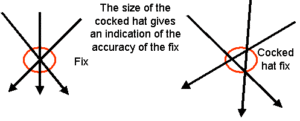
Hence, astronavigation was for us the process of finding the ship’s position more accurately than the dead-reckoning (DR) position. A final question that you would ask me is that weren’t there modern technological means available to fix the ship? Well, there were, but, we were to learn astronavigation just-in-case in the same manner as we kept learning sails and masts even after the advent of steam-ships.
Finally, I might as well tell you that being at sea is very much different from anything that you can imagine. You have no idea of how lost you can get after spending a few hours or days at sea. All directions appear the same and there is nothing to differentiate one from the other. The only analogy that I can give you is the one given by my armoured course mates (how the poor guys miss out on becoming the army chiefs unless it is by accident!) in desert warfare; at times you have no idea of whether you are coming or going. Anyway, let me add that this confusion of being at sea has led Fleet Navigating Officers (the most qualified navigators in the fleet) of leading an entire fleet into waters and even harbours different from the ones that they had intended (as an example, please read: ‘Poor Communicator Had The Last Laugh’). In a major tactical exercise at sea, as another example, when the fleet at sea was divided into Red (enemy) and Blue (own) forces, two ships of the Blue forces encountered each other after going on different tracks and shot missiles at each other thinking of the other as Red ship.
A navy officer, of my era or earlier, would therefore be well versed with recognising navigational stars at sea and would rattle out star names such as Sirius, Rigel, Betelgeuse, Pollux, Aldebaran, Capella, Spica, Arcturus and the Belt of Orion simply by looking at the sky.
Other than that, let me assure you, there is a vast difference between the theory and the practice. For those of you who think it is ancient and outdated, let me tell you that the most modern navy in the world – the US Navy – discontinued (in part only) celestial navigation being taught to its officers in formative years only. And what is the part that they discontinued? Well, the part of physically calculating and drawing bearing lines ( a 22 step process that we all learnt). Instead, nowadays, the shooting star data (the physical data) is fed into a computer and a fix is obtained almost instantly. There are clearly advantages in astronavigation such as its signals cannot be jammed or stopped (unlike that of a radar or even satellite), it is globally available (stars and sun are available everywhere) and the process doesn’t give out any signals that can be detected by the enemy.
However, the inaccuracies of the process (two people are required at the same time to shoot stars: one for bringing the star to the horizon and the other for accurately noting the time of the observation with a chronometer) are many such as inaccurately calibrated sextant or chronometer, great inaccuracies in the last known position, misidentified stars, horizon not being clear due to many reasons (such as choppy seas) and inaccuracies in calculating and plotting. And these led to some hilarious situations at sea.
One that we had often heard was about these young Royal Navy officers trying out celestial navigation in the Thames river in the olden days. After the position calculated by them was plotted on the chart, the Navigator told them gravely that they would have to remove their hats as the ship had landed up in the middle of Saint Paul’s Cathedral.
In our case too, many a times the fix was plotted on the land. Minutes and even hours of shooting stars or the sun, calculating and plotting, would be of no use to the ship.
During my higher command course with the army, the only use for the navy that my army course mates found was to help them in their operations on land. Little did they know how often we had been helping them during the course of astronavigation by landing our ships just next to where they were busy fighting land battles!
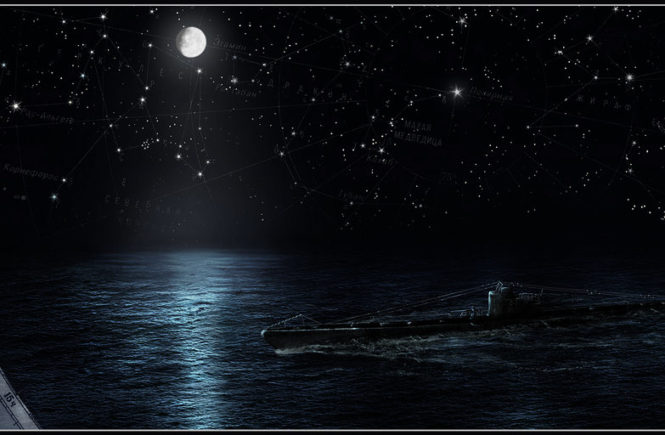
At last, the fundamentals of Astro navigation made clear. Lots of memories come flooding back. Thank you sir
Thank you Pradeep